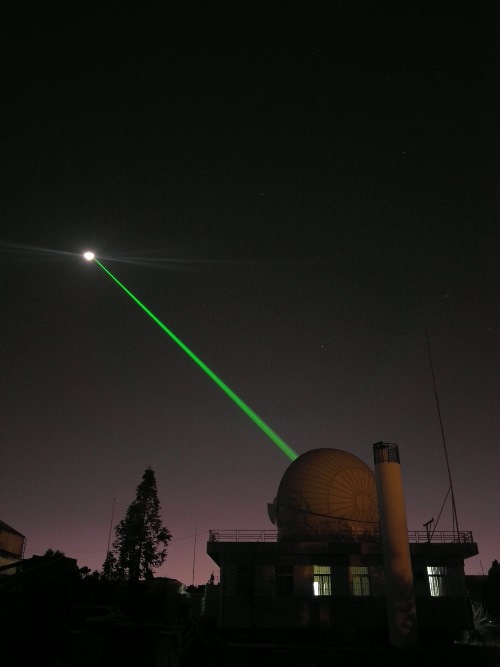
On the night of January 22, 2018, the Applied Astronomy Group of Yunnan Observatories of Chinese Academy of Sciences successfully detected the laser echo signal from the lunar-surface reflector Apollo15 for several times using the 1.2-meter Telescope Laser Ranging System, which is the first successful Lunar Laser Ranging (LLR) experiment in China.
This lunar ranging makes China the fourth country after the USA, France and Italy which have successfully accomplished LLR experiment.
According to the experimental data, from 21:25 to 22:31 Beijing Time, the distance between the observatory and the lunar reflector Apollo15 was 385823.433 km~387119.600 km, with ranging accuracy within 1 m. Average Earth-Moon distance is 384403.0 km.
LLR calculates the distance between the Earth and the Moon by measuring the time of the laser pulse travelling from ground station to the lunar reflector, which is currently the most accurate technique. It has also been applied to many fields such as laser, photoelectric detection, automatic control and space orbit.
The observational data are also valuable to fields including astronomical geodynamics, Earth-Moon dynamics, lunar physics and the verification of gravitational theory.
The 1.2 m Telescope Laser Ranging System uses common optical path mode. The laser wavelength is 532 nm with pulse-width 10ns and frequency 10 Hz, and laser energy during the experiment is 3.3 J.
The LLR experiment was supported by Chinese Academy of Sciences, the National Natural Science Foundation of China, TianQin research center of Sun Yet-sun University, etc.

The 1.2-meter Telescope during the LLR (Image by TANG Rufeng)

86-10-68597521 (day)
86-10-68597289 (night)

86-10-68511095 (day)
86-10-68512458 (night)

cas_en@cas.cn

52 Sanlihe Rd., Xicheng District,
Beijing, China (100864)

